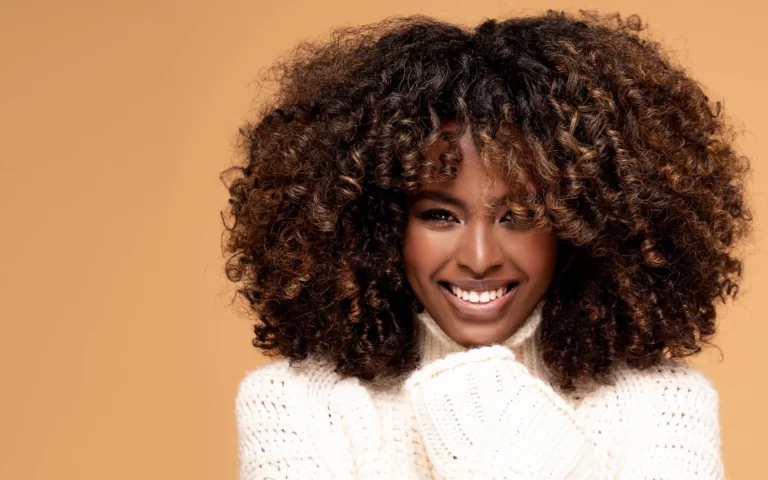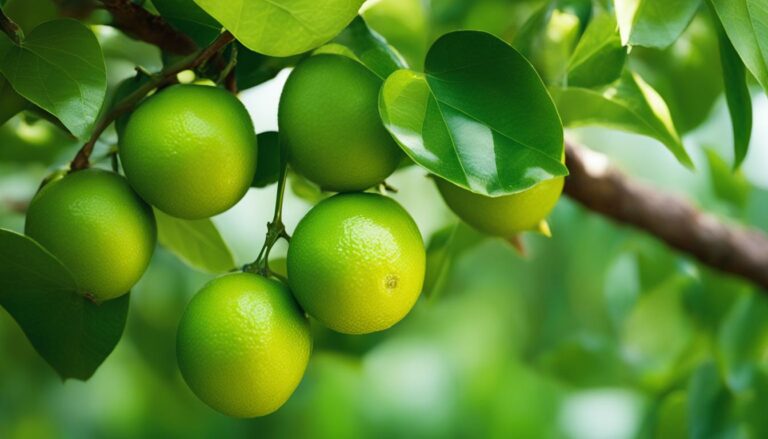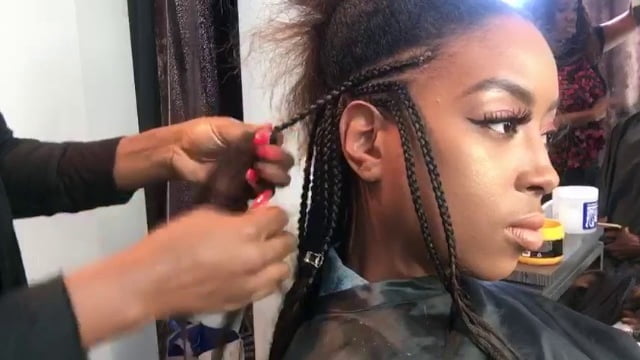Do Braids Slow Hair Growth?
When it comes to hair growth, there are many myths and misconceptions. One common question that arises is whether braiding your hair can slow down its growth. In this article, I will debunk the myths and provide you with the facts about braids and hair growth.
Braiding your hair doesn’t directly make it grow faster, as hair growth is influenced by genetics, protein, nutrients, scalp health, and diet. However, braids can help nurture and protect your hair, preventing breakage and promoting overall hair health.
Braids can make your hair stronger by reducing friction, keeping it moisturized, and preventing dryness and frizziness. They act as a shield, protecting your hair from external factors that can cause damage.
While braids may not directly promote hair growth, they can contribute to the health and strength of growing hair. Now, let’s take a look at some key takeaways:
Key Takeaways:
- Braiding your hair does not directly affect its growth rate.
- Braids can help protect your hair from breakage and damage.
- Proper care is essential for maintaining the health of braided hair.
- Avoid excessive tension on the hair follicles and scalp to prevent damage.
- Braided styles provide versatility and customization options for different hair textures and types.
The Benefits of Braiding Your Hair
Braiding your hair offers several benefits for its strength and texture. When you braid your hair, you provide protection against breakage, especially while sleeping. The twisted strands in a braided style are stronger and less prone to breakage compared to leaving the hair loose or tied into a ponytail. Braids also aid in moisture retention, preventing dryness and frizziness.
By keeping your hair protected and moisturized, braids promote overall hair health and minimize damage. Adding oil to your braided hair can further increase moisture retention. Braids not only offer style and convenience but also contribute to the health and strength of growing hair.
Benefits of Braiding Your Hair:
- Protects your hair from breakage
- Reduces friction between the hair and pillow
- Strengthens the hair strands
- Locks in moisture and prevents dryness
- Aids in overall hair health and prevents damage
In summary, braiding your hair offers numerous benefits, including hair protection, breakage prevention, and moisture retention. By incorporating braided styles into your hair care routine, you can promote healthier, stronger hair.
Can Braids Damage Your Hair?
Braiding your hair can be a great way to style it and protect it from breakage. However, if not done properly, braids can also cause damage to your hair. One common issue is tight braids, which can put excessive tension on the hair follicles and lead to hair loss. It’s important to avoid tightly braiding your hair and opt for looser styles that don’t pull on the scalp.
Preventing hair damage from braids requires taking breaks in between styles to allow your scalp and hair to rest. Tight braids should also be avoided if you have thin or fragile hair, as they can cause further damage. Instead, opt for braided styles that are gentle on your hair and scalp.
When braiding your hair, it’s crucial to strike a balance between protecting your hair and avoiding excessive tension. Massaging your scalp with essential oils can help promote scalp health and prevent damage. By following these tips, you can enjoy the benefits of braiding your hair while minimizing the risk of damage.
Popular Braided Styles
Braided hairstyles are a timeless and versatile choice that allows individuals to express their personal style while promoting hair health. Here are some popular braided styles:
- Box Braids: Box braids are a classic choice that involves sectioning the hair into small, square-shaped sections and braiding each section from the root to the tip. This style is popular among people with Afro-textured hair and can be customized with different lengths and sizes.
- Ghana Braids: Ghana braids, also known as Ghanaian braids or banana cornrows, are chunky, cornrow-style braids that are braided close to the scalp. This style is characterized by intricate designs and can be adorned with beads or accessories.
- Microbraids: Microbraids are tiny braids that are braided tightly and close to the scalp. This style requires a skilled stylist as it involves braiding very small sections of hair. Microbraids can be left loose or styled into updos or ponytails.
- Cornrows: Cornrows are braids that are created by weaving the hair flat against the scalp. They are typically straight and close to the head, forming rows of braids. This style can be worn in various patterns and can be enhanced with beads, cuffs, or colorful extensions.
- Goddess Braids: Goddess braids are large, chunky braids that are braided close to the scalp and often styled into intricate patterns. They are popular for their regal and goddess-like appearance, and can be worn as a single braid or multiple braids.
- Feed-in Braids: Feed-in braids, also known as invisible braids or Ghana weaving, are braids created by gradually adding hair extensions as the braid progresses. This technique gives a natural-looking result with the illusion of hair growing from the scalp.
These braided styles are just a few examples of the wide range of options available. Whether you prefer a classic, intricate, or trendy look, there is a braided hairstyle to suit your preferences and hair type.
Image:

Caring for Braided Hair
Proper care is essential for maintaining the health of braided hair. Before braiding, it’s important to wash, moisturize, and detangle the hair. Clean and hydrated hair will better retain moisture and be easier to braid.
While wearing braids, it’s crucial to regularly clean and moisturize the scalp to reduce pressure and maintain a healthy environment. At night, protecting the braids with a headscarf or wrap can help prevent damage. The duration of keeping hair in braids should be limited to around two months, as prolonged braiding can exert excessive tension on the scalp and hair follicles. Washing the braids periodically can help keep them clean and maintain their longevity.
Caring for Braided Hair: Tips and Recommendations
- Wash your hair before braiding to remove dirt, oils, and product buildup.
- Moisturize your hair and scalp with lightweight oils or leave-in conditioners to prevent dryness.
- Gently clean your scalp with a diluted shampoo or a specialized scalp cleanser to remove sweat and buildup.
- Protect your braids at night by covering them with a silk or satin headscarf or using a silk or satin pillowcase.
- Avoid excessive tension and pulling on your braids to prevent damage to your hair follicles.
- Refresh your braids by washing them every 1-2 weeks to keep them clean and maintain their appearance.
- Listen to your hair and scalp. If you experience discomfort, itching, or excessive hair loss, take a break from braiding and consult a professional stylist or dermatologist.
By following these care tips and recommendations, you can maintain the health and longevity of your braided hair while promoting optimal hair growth.
Conclusion
In summary, while braiding your hair may not directly impact its growth rate, it can certainly contribute to the overall health and strength of your hair. Braids act as a protective style, helping to prevent breakage by reducing friction between your hair and external elements, such as pillowcases. Additionally, braids help to retain moisture, keeping your hair hydrated and preventing dryness and frizz.
It’s important to note that tight braids can potentially cause damage and lead to conditions like traction alopecia. Excessive tension on the hair follicles and scalp should be avoided to maintain the health of your hair. Regular breaks between braided styles and gentle massaging of the scalp with essential oils can help promote scalp health and minimize the risk of damage.
Popular braided styles, such as box braids, Ghana braids, and cornrows, offer versatility and customization options for different hair textures and types. Taking proper care of your braided hair, including regular washing, moisturizing, and protecting it at night with a headscarf or wrap, is essential for maintaining its health and longevity.
In conclusion, while braids may not directly promote hair growth, they provide numerous benefits for the health and vitality of your hair. By understanding the impact of braiding and practicing proper care, you can make informed choices that support the overall well-being of your hair.
FAQ
Do braids slow hair growth?
No, braiding your hair does not directly slow down hair growth. Hair growth is influenced by genetics, protein, nutrients, scalp health, and diet.
What are the benefits of braiding your hair?
Braids can protect your hair from breakage, reduce friction, lock in moisture, and promote overall hair health.
Can braids damage your hair?
Yes, tight or heavy braids can cause damage, pulling on the hair follicles and leading to conditions like hair loss. It’s important to avoid excessive tension when braiding.
What are some popular braided styles?
Popular braided styles include box braids, Ghana braids, microbraids, cornrows, goddess braids, and feed-in braids. These styles offer versatility and can be customized to suit individual preferences.
How do I care for braided hair?
Proper care for braided hair involves washing, moisturizing, and protecting the scalp and hair from excessive pressure. It’s important to maintain a healthy environment for the scalp and periodically clean the braids.
Does braiding hair promote hair growth?
While braiding your hair may not directly promote hair growth, it can contribute to the health and strength of growing hair. Braids protect the hair from breakage and promote scalp health.







